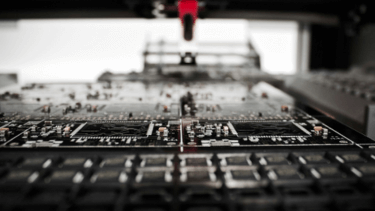What can significantly boost the Philippine economy?

Sponsored by

Using historical analysis and empirical evidence, DLSU School of Economics Distinguished Professor and Angelo King Institute of Economic and Business Studies Director Dr. Jesus Felipe offers a fresh outlook on the development of an innovative economy and the role of the government and private sector in shaping it.
With a 5.5% growth rate in 2023, the Philippines painted a steady recovery past the global pandemic. For this year, the government expects the economy to grow between 6% and 7% amid anticipated world economic slowdown.
While the expected growth rate is lower than the 6.5%-7.5% projection made last December, the government tries to be optimistic, with the country’s economic managers setting their goal for 2025: an upper middle-income status (which is at least USD 4,256 gross national income per capita). Government officials list the following to achieve the target: a low inflation, a labor force with access to more and better jobs, a stronger fiscal standing, and a dynamic and innovative economy.
But are these enough to allow the Philippines to be on par with its more developed Asian neighbors?
In order to answer this complex question, Dr. Jesus Felipe, Distinguished Professor of the De La Salle University School of Economics and director of the Angelo King Institute of Economic and Business Studies, traces the journey to innovation and industrialization. South Korea is a good case study of a country he considers the best example in the region.
“First, we expect at the School of Economics that growth in 2024 will be about 5.6%, significantly below the government’s expectations. Growth will pick in 2025 and 2026, when we expect it will reach 6.3 and 6.0%, respectively. We think this is the most the Philippine economy can grow today. It does not have the capacity to grow faster, much less for a long time,” Felipe shares.
On the broader question of what a successful nation like South Korea did back in the 1960s, President Park Chung Hee realized that industrialization through manufacturing was his country’s ticket out of poverty. “Manufacturing is a sector with special properties. Once you learn how to make certain products within the electronics cluster, for example, you develop some capabilities that you can redeploy to make many other products. The same thing happens when you make it into the automobile or chemical sectors. You create linkages with other sectors of the economy, and learn by doing, which increases your productivity and reduces your costs. All this is much harder in traditional agriculture and in many services—think of waiters in restaurants or sales personnel in department stores,” Felipe says.
“South Korea realized that the world is very large. It was producing manufacturing products, not just for the South Korean consumers but for the world,” he points out.
A second element of industrialization is the role of exports. South Korea’s rapid export expansion also began in the 1960s and this accelerated their process of development. Exports played two fundamental roles. First, it forced companies to compete with the world economy. This means that they had to become better as time passed by. That is, they had to compete not just in price but also, and more important in the long run, in terms of product quality and sophistication. Korean cars improved in quality very quickly. Second, a developing country needs to import all those goods that are necessary for its development, in particular capital goods (machinery) that help transform the economy. These goods have to be paid in a foreign currency, typically US dollars. These have to be earned via exports.
Felipe also notes that other countries like Japan, Taiwan, Singapore, China, and Vietnam, even with differing economies, have also applied the same model. “That’s the essence of what development is about—once you start manufacturing products, you move up the ladder. You start manufacturing and exporting very simple products, then you end up manufacturing very complex cars, machines, electronics, and chemical products.”
Unlike its neighbors, the Philippines followed a completely different economic path, relegating its manufacturing sector to a small sector, in particular from the employment side. Felipe notes: “Historically, we do not know of any nation that has attained high income per capita without developing a significant manufacturing sector. Where do you think innovation comes from? Manufacturing. You may have some type of innovation in the service sector but it is, one way or another, always linked to what you do in manufacturing.”
When asked about the chances of the Philippines to catch up in the industrialization train, Felipe says, “There are always opportunities out there in terms of niches. In the manufacturing sector, it is a big aggregate that, in reality, is thousands of products. And I’m familiar with manufacturing companies in the Philippines in most of the sectors, including chemicals. So, the challenge is how to multiply that experience in the next few years, in the next couple of decades, to be able to develop some niches where we may have opportunities.”
He adds that the key is for the Philippines to have very competitive, meaning productive, firms that will both produce for the domestic market and export and compete in the world economy.
Likewise, Felipe emphasizes the vital role of the government. “It is absolutely fundamental. Without a government directing the economy in the right direction, it is going to be very difficult for the economy to progress. The government must have a clear national vision and must work with the private sector, which is composed of thousands of firms. The government must indicate the overall direction.”
The thrust on industrialization should be at the center of the country’s policy agenda, he says, adding that the work needs strong collaboration between the private and public sectors, from academe to media to the general public.
“How do we become an industrial nation? How do we strengthen the niches that are going to help us?” He notes that for the country “to achieve higher wages and higher capita income, it needs to create a wide base of domestic industrial companies that produce the myriad of basic products across the whole manufacturing spectrum that support national development. This is something that everybody needs to be aware of.”
To make various stakeholders understand the state of the Philippine economy, Dr. Jesus Felipe and the DLSU School of Economics have initiated various seminar-lectures that feature international speakers and faculty researchers tackling topics such as short- and long-run growth, inflation, fiscal consolidation, investment, and economic structure.
Contact: Dr. Jesus Felipe | jesus.felipe@dlsu.edu.ph